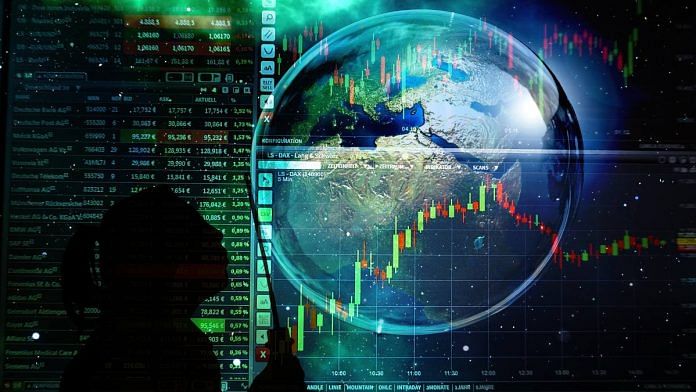Hong Kong: Two of the biggest hurdles constraining the world economy have just been cleared.
Dogged for most of 2019 by trade tensions and political risk that hammered business confidence, the outlook for global growth will enter 2020 on a firmer footing after the U.S. and China struck a partial trade deal and outlook for Brexit cleared somewhat.
“The China trade deal and U.K. election result have taken out a major tail risk overhanging markets and companies,” said Ben Emons, managing director for global macro strategy at Medley Global Advisors in New York. “Business confidence should see a large boost that could see a restart of global investment, inventory rebuild and a resurgence of global trade volume.”
Like financial markets, most economists had factored in some kind of phase-one trade agreement between the world’s largest economies when projecting the world economy would stabilize into 2020 after a recession scare earlier this year.
But at a minimum, the agreement between President Donald Trump and President Xi Jinping means some of the more dire scenarios being contemplated just a few months ago now appear less likely. Bloomberg Economics estimated in June that the cost of the U.S.-China trade war could reach $1.2 trillion by 2021, with the impact spread across the Asian supply chain. That estimate was based on 25% tariffs on all U.S.-China trade and a 10% drop in stock markets.
The phase one deal nevertheless leaves some complicated issues unresolved, paving the way for fresh clashes as Trump runs for reelection next November. Still to be dealt with are U.S. complaints over the vast web of subsidies ranging from cheap electricity to low-cost loans that China has used to build its industrial might. Trump said talks over a Phase Two deal will start immediately.
What Bloomberg Economists Say…
“A trade deal that takes tariffs back to May 2019 levels (for the U.S. that would mean 25% on $50 billion in China imports and 10% on another $200 billion) and lowers uncertainty could boost global GDP for 2020 by 0.6%. A breakdown in talks and higher tariffs — still a possibility given how past agreements have broken down — would drag global output down 0.1%.”
—Tom Orlik, chief Economist, Bloomberg Economics
As for Brexit, the sweeping election victory by Prime Minister Boris Johnson’s Conservative Party means Britain is set to leave the EU on January 31. Bloomberg Economics says the result puts a growth rebound in play which, coupled with looser fiscal policy, means activity should accelerate over 2019.
At the same time, Johnson must now negotiate a new trade deal with the EU by the end of next year, meaning fresh uncertainty could emerge. “Brexit could continue to weigh on economic activity as the difficult task of forging the U.K.’s new trading relationships is just beginning,” said Simon Wells, chief European economist at HSBC Holdings Plc.
The twin developments come amid broader signs that demand across much of the world is stabilizing as key manufacturing gauges trough. The International Monetary Fund had flagged upside risks to its recent outlook if major trade tensions were resolved.
Policy makers have also sounded more upbeat this week.
European Central Bank President Christine Lagarde said the euro zone’s economic slowdown was showing signs of bottoming out and Federal Reserve Chairman Jerome Powell said the prognosis for the U.S. remains favorable. The Chinese government said it would improve the effectiveness of fiscal policy in 2020, while Japan is planning new fiscal stimulus.
Morgan Stanley economists expect the global economy to recover some momentum in 2020 with growth improving from a trough of 2.9% in the fourth quarter of this year to 3.4% by the end of 2020 with that uptick driven more by the rest of the world than the U.S.-Bloomberg
Also read: The way out for a world economy hooked on debt? More debt






